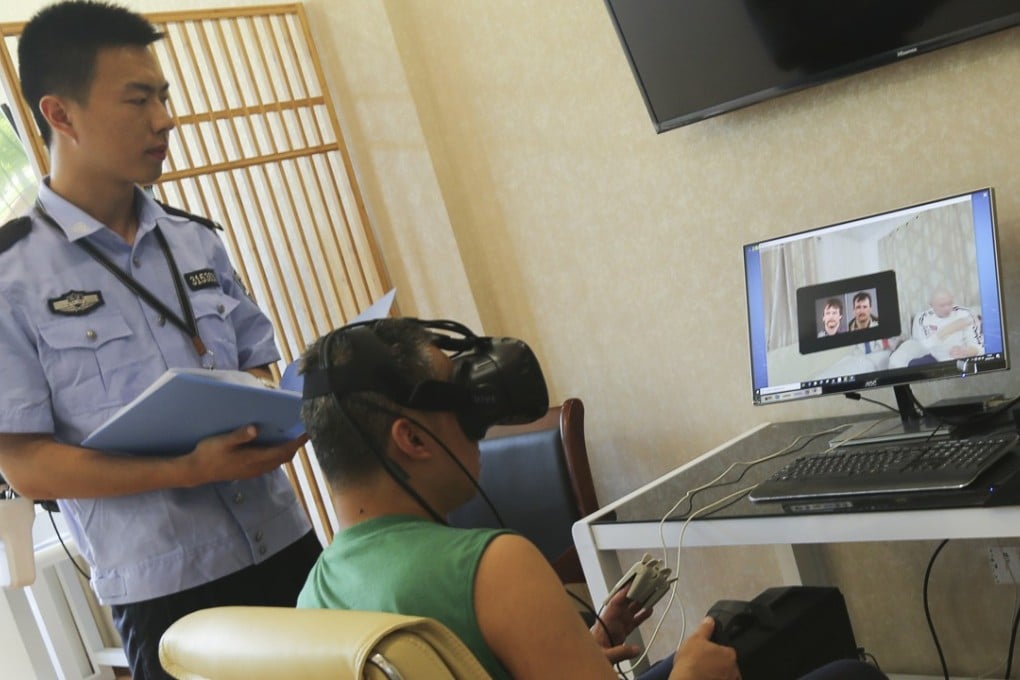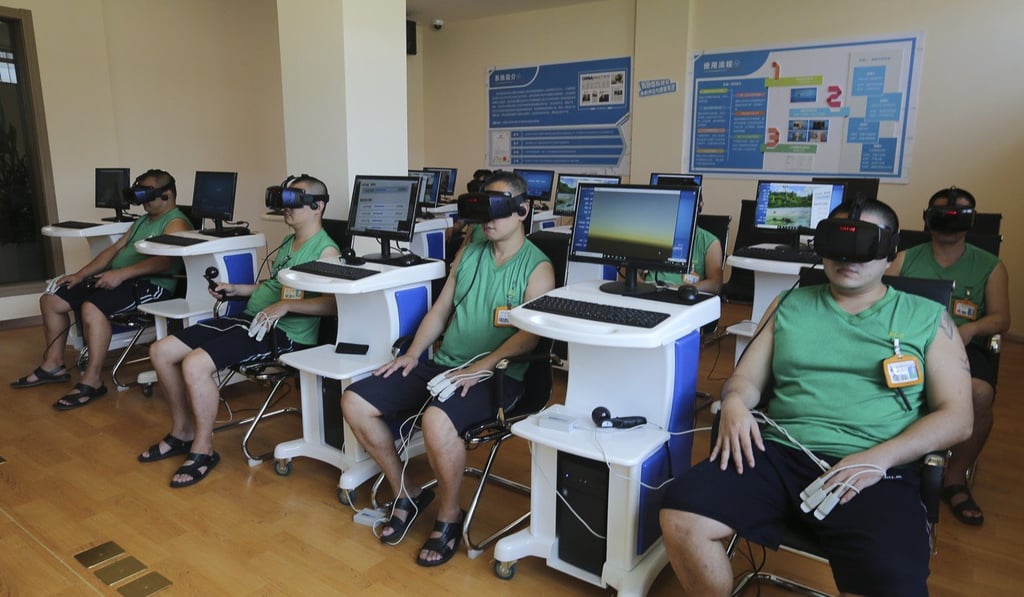How China is using virtual reality to help drug addicts turn their lives around
A pilot programme at Shanghai’s rehab centres taps the technology to measure addiction and determine how to treat it

In a treatment room at a suburban Shanghai drug rehabilitation centre, “Victor Wu”, a recovering addict, sits in front of a computer screen, viewing assorted scenes through a virtual reality headset.
Wu (not his real name) takes in a lifelike image of a young man and a woman sitting on a sofa drinking a clear liquid through a straw from a small bottle. As he does so, clips attached to three of the fingers on his left hand pick up his physical reactions.
The data reveals to his observers – including police officers who can see on the computer screen what Wu sees – the degree to which this stimulus excites him.
As the woman in this VR-enhanced scene holds her straw out to Wu, enticing him to drink with her and the man, Wu remains captivated for at least 10 seconds – a detail the observers note with interest.

Although he can choose the scenes to view and their duration by using the switch he holds in his right hand, “Wu’s attention is stuck on this scene for a while before [he moves on] to look at other no-drug scenes”, an officer told the South China Morning Post.
